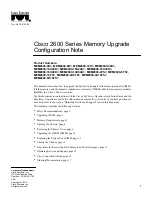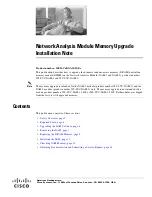
v
Each rack cabinet might have more than one power cord. Be sure to disconnect all power cords in
the rack cabinet when directed to disconnect power during servicing.
v
Connect all devices installed in a rack cabinet to power devices installed in the same rack
cabinet. Do not plug a power cord from a device installed in one rack cabinet into a power
device installed in a different rack cabinet.
v
An electrical outlet that is not correctly wired could place hazardous voltage on the metal parts of
the system or the devices that attach to the system. It is the responsibility of the customer to
ensure that the outlet is correctly wired and grounded to prevent an electrical shock.
(R001 part 1 of 2)
DANGER
v
Do not install a unit in a rack where the internal rack ambient temperatures will exceed the
manufacturer's recommended ambient temperature for all your rack-mounted devices.
v
Do not install a unit in a rack where the air flow is compromised. Ensure that air flow is not
blocked or reduced on any side, front, or back of a unit used for air flow through the unit.
v
Consideration should be given to the connection of the equipment to the supply circuit so that
overloading of the circuits does not compromise the supply wiring or overcurrent protection. To
provide the correct power connection to a rack, refer to the rating labels located on the
equipment in the rack to determine the total power requirement of the supply circuit.
v
(For sliding drawers) Do not pull out or install any drawer or feature if the rack stabilizer
brackets are not attached to the rack. Do not pull out more than one drawer at a time. The rack
might become unstable if you pull out more than one drawer at a time.
v
(For fixed drawers) This drawer is a fixed drawer and must not be moved for servicing unless
specified by the manufacturer. Attempting to move the drawer partially or completely out of the
rack might cause the rack to become unstable or cause the drawer to fall out of the rack.
(R001 part 2 of 2)
To remove the SAN Volume Controller 2145-8F4 or the SAN Volume Controller 2145-8F2 node from a
rack, complete these steps:
1.
To make sure that you can replace all cables in the same ports from which they were removed, record
the position of all fibre-channel and Ethernet cables; then remove all cables from the back of the node.
2.
Unlatch the two latches on the front of the rack.
3.
Pull the node forward and remove it from the rack.
Replacing the SAN Volume Controller in a rack
You must use caution when you replace the SAN Volume Controller in a rack.
Note:
If you have recently replaced a field-replaceable unit (FRU) in the node, the repaired node
normally rejoins the cluster as soon as it is powered-on and has completed its self-tests. There are some
exceptions to this, such as when a disk drive has been replaced, or when for some other reason the node
has lost its identity or the integrity of its cluster metadata. Under these circumstances, the node goes
offline. If you are performing this repair under directed maintenance procedures, those procedures will
48
IBM SAN Volume Controller Hardware Maintenance Guide
Summary of Contents for SAN Volume Controller
Page 2: ......
Page 14: ...xii IBM SAN Volume Controller Hardware Maintenance Guide...
Page 22: ...xx IBM SAN Volume Controller Hardware Maintenance Guide...
Page 26: ...xxiv IBM SAN Volume Controller Hardware Maintenance Guide...
Page 316: ...290 IBM SAN Volume Controller Hardware Maintenance Guide...
Page 322: ...Taiwan Class A compliance statement 296 IBM SAN Volume Controller Hardware Maintenance Guide...
Page 324: ...298 IBM SAN Volume Controller Hardware Maintenance Guide...
Page 326: ...300 IBM SAN Volume Controller Hardware Maintenance Guide...
Page 332: ...306 IBM SAN Volume Controller Hardware Maintenance Guide...
Page 333: ......
Page 334: ...Part Number 31P1173 Printed in USA GC27 2226 03 1P P N 31P1173...
















































